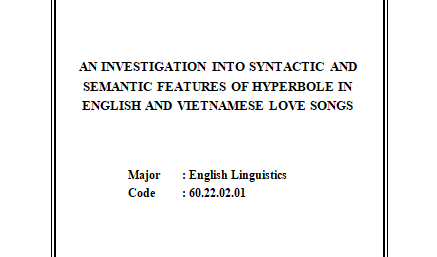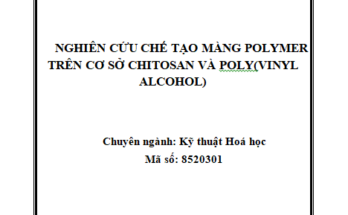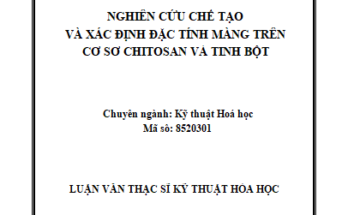AN INVESTIGATION INTO SYNTACTIC AND SEMANTIC FEATURES OF HYPERBOLE IN ENGLISH AND VIETNAMESE LOVE SONGS
Music, an integral part of any culture, is considered as a special language which penetrates most deeply into the heart and the soul of any individual. As quoted in the article “Explainer: How are learning languages and music are linked?” posted in the journal “The conversation” by Tsoulas (2014), language has been interpreted by thinkers from Locke to Leibniz and Mill to Chomsky as a mirror or a window to the mind. According to American psychologist Pattel, language and music define us as humans. Musical intelligence and linguistic intelligence have for a long time been demonstrated to be in intimate relationship. The link between music and linguistics has also been documented in various research studies and publishings. Music is often used in foreign language classrooms; however, it is usually referred to as an entertaining and/or recreational activity. This is regrettable since music can be used as an excellent pedagogical tool in language teaching. With the current emphasis on using authentic materials for both language learning and for familiarizing learners with foreign culture, it is worth noting that songs constitute a highly beneficial component to foreign language learning for they demonstrate another culture and bring authentic voices embedded in their lyrics.
Love songs have been a source of inspiration for almost every single learner of foreign languages regardless of cultures. While the melody could create first impression on listeners, the beauty of lyrics, which can reach the level of art, remains a mystery hat needs to be further discovered. Among the stylistic devices employed by most song writers, hyperbole emerges as a major part of it, yet remains relatively unexplored. Hyperbole, according to Galperin (1981, p.171), is “a deliberate overstatement or exaggeration of a feature essential to the object or phenomenon. In its extreme form this exaggeration is carried to an illogical degree, sometimes ad adsurdum.” As mentioned by Claridge (2011), hyperbole is still a largely under-researched field, in particular contrast to the weath of material available on other figures of speech such as metaphor and irony. Let us look at several examples of hyperbole employed in English and Vietnamese love songs:
[1.1] When you smile, the whole world stops and stares for a while.
Because you’re amazing just the way you are [S-39]
Obviously, the sentence is a deliberate overstatement. The world cannot stop nor stare just because of someone’s smile. Such exaggeration is used to emphasize how wonderful the woman’s smile is, to dramatize the man’s deep feelings, and to attract listeners’ attention.
[1.2] Chỉ cần em hiểu anh và biết rằng anh mãi mãi yêu em mà thôi
Vì trong anh em là điều duy nhất. [S-79]
To tell her how much and how long he loves her, hyperbolical adverb mãi mãi and expression điều duy nhất are used to exaggerate the man’s feelings. Apparently, from my own teaching experience, I have found that learning to analyze and interpret the hyperbolical expressions in everyday life relatively challenging for Vietnamese learners as well as for foreigners who study Vietnamese language and culture. They fail to understand the delicate aspects of hyperbole employed in English songs and face difficulties in making effective use of this device. Besides, I recognized that hyperbole has not sufficiently and systematically been explored in English and Vietnamese love songs so far. Also, I have noticed that teaching English through songs creates great interest for the learners and thanks to fascinating melodies and beautiful lyrics, along with the power of hyperbole, messages of love become easier to acquire.
For the above-mentioned reasons, I decided to conduct a study with the topic “An Investigation into Syntactic and Semantic Features of Hyperbole in English and Vietnamese Love Songs”. This study aims to shed new light on a number of fascinating aspects of hyperbole. Hopefully, this study can contribute to the learning and teaching of English and help Vietnamese learners interpret and use hyperbole effectively.
1.2. AIMS AND OBJECTIVES
This research aims to study hyperbole in English and Vietnamese love songs in terms of syntax and semantics to have a good insight into hyperbole. The study is also aimed at finding the differences and similarities in the language of hyperbole frequently utilized in love songs of the two languages. The study’s findings contribute to the better understanding of hyperbole, which facilitates the comprehension and translation of hyperbolic expressions from English into Vietnamese and vice versa.
1.2.2. Objectives of the Study
- To select hyperbole items with high frequency and extensive coverage in English and Vietnamese love songs.
- To describe, classify and analyze hyperbole in terms of syntax and semantics in both English and Vietnamese.
- To identify the differences and similarities in structure and the topic in which hyperbole of the two languages are employed and their implicit meaning.
- To propose some implications of the findings for the teaching and learning of English concerning hyperbole.
In order for all the aforementioned aims and objectives to be achieved, the following research questions were put forward:
1. What are the syntactic features of hyperbole in English and Vietnamese love songs?
2. What are the semantic features of hyperbole in English and Vietnamese love songs?
3. What are the similarities and differences in the use of hyperbole in terms of syntactic and semantic features in English and Vietnamese love songs?
1.4. The significance of the study
The study on the syntactic and semantic features of hyperbole in English and Vietnamese songs is expected to be a contribution to the current knowledge of the field, and the findings from the descriptive and contrastive analysis of between English and Vietnamese is supposed to be beneficial for Vietnamese learners of English and for the process of teaching English as well.
Due to the limitation of time, of the researcher’s ability and within the scope of a thesis, this paper only attempts to investigate the syntactic and semantic features of hyperbole which have been popular so far in English and Vietnamese love songs. The data collected are also limited to those taken from English and Vietnamese love songs. In addition, the thesis is written for Vietnamese users of English and English users of Vietnamese, both of whom have a good command of the two languages; hence all English examples are not translated into Vietnamese and vice versa.
1.6. ORGANIZATION OF THE STUDY
The study is organized into five chapters including:
- Chapter 1. Introduction.
- Chapter 2. Literature Review and Theoretical Background
- Chapter 3. Research Design and Methodology
- Chapter 4. Findings and Discussions.
- Chapter 5. Conclusion and Implications
LITERATURE REVIEW AND THEORETICAL BACKGROUND
2.1. Review of previous studies
Hyperbole has a long history, going back to Aristotle, as a rhetorical figure in written texts. Since rhetoric practice has traditionally been associated to the production of persuasive speech, and later to aesthetics and literature, only relatively recently has the study of figurative language been switched into the domain of banal, everyday language. In the world, hyperbole is mentioned in a number of books by famous authors. Researchers with studies on stylistics in English, namely Galperin, Claridge, Spitzbardt, Cohen, Edelman et el., Colston, McCarthy, and Carter have made theoretical contributions to this domain. Galperin (1981, p.173) maintains, ‘The aim of hyperbole is to intensify one of the features of the object in question to such a degree as will show its utter absurdity’. Hyperbole is defined as a form of extremity, an exaggeration that either magnifies or minimises some real state of affairs (Mora, 2004). For Kreuz et al. (1996), after metaphor, hyperbole is the most common trope. The term goes back to Aristotle, and “features throughout the historiography of rhetoric” (McCarthy & Carter 2004,p.151). Together with other tropes and types of figurative language, hyperbole has been studied largely within the area of literature and rhetoric.
Hyperbole is usually defined as a form of extremity, an exaggeration that either magnifies or minimizes some real state of affairs. Exaggerated expressions have traditionally been thought of as overstated simulacrums of reality. It is striking, though, that despite its pervasive frequency of occurrence, the study of hyperbole tends to be neglected by figurative language scholars. Kreuz et al. (1996), after studying eight main forms of non-literal language in a corpus of contemporary American short stories, adduce empirical evidence of this pervasiveness by showing that after metaphor, hyperbole is the commonest trope. Therefore, they claim that “in terms of sheer occurrence, hyperbole seems to deserve more notice than it has received to date”. The importance of hyperbole becomes even clearer after an inspection of the co-occurrence matrix in the aforementioned study by Kreuz et al. (1996). They also demonstrated that exaggeration is by far the trope that most often co-occurs with other figures. It was involved in almost 80% of the cases of co-occurrence, and it interacted with every other type of non-literal language with the exception of its logical opposite, understatement. Claridge in her book “Hyperbole in English- A Corpus-based Study of Exaggeration” (2011) provided the first investigation of hyperbole in English, drawing on data from genres such as spoken conversation, TV, newspaper and literary works from Chaucer to Python. In her study, Claudia combined quantitative and qualitative analyses, using approaches from semantics, pragmatics, discourse analysis and classical rhetoric, to investigate in detail both speaker-centred and emotive aspects of hyperbole, and also addressee-related aspects such as interpretation and interactional uptake. She also illustrated her study with a range of diachronic case studies and hyperbole is also shown to be a main means of linguistic creativity and an important contributor to language change. The book concludes with an exploration of the role of hyperbole in political speaking, humour, and literature.
In studies of stylistics in Vietnamese, Võ Bình (1982) in “Phong cách học tiếng Việt” and Cù Đình Tú (1983) in “Phong cách học và đặc điểm tu từ tiếng Việt” distinguish mere exaggeration from hyperbole. They maintain that hyperbole looks like exaggeration, but makes the fact become more truthful because the larger the fact dimensions become, the clearer the nature is. Hence, hyperbole is seen as a means that makes the expression go deeply into the nature of object. Hoàng Tất Thắng (2003) in “Phong cách học tiếng Việt” and Hữu Đạt (2001) in “Phong cách học tiếng Việt hiện đại ” gives a definition of hyperbole and mentions two functions of hyperbole: cognitive and expressive. He claims that hyperbole is not a lie and used to make a strong impression. It gives greater emphasis and it is used mainly in everyday speech, in political-commentary and literature.
Later, Hoàng Trương Phước Lộc (2011) in “An Investigation into the Translation of Hyperboles from Vietnamese into English as Manifested in English Versions of Truyện Kiều” investigates hyperboles in Truyện Kiều on the aspect of translation equivalence and how they are transferred into English, the similarities and differences manifested in different English versions. Huỳnh Nguyên Đán (2013) in “A Contrastive Analysis of Hyperbole in Vietnamese and English Folktales” studies hyperbole used in Vietnamese and English Folktales.

Various aspects of hyperbole have been studied for years; however, there remain some other interesting aspects left undiscovered. The previous studies have not dealt with hyperbole employed in love songs.
In general, a lot of research has been done on stylistic devices in general and hyperbole in particular up to now. However, there have been no researchers carrying out a systematic investigation into the use hyperbole expressed in English and Vietnamese love songs. Therefore, it is expected that the study is an effort to bridge this gap, contributing to offer Vietnamese learners of English a better understanding of the linguistic features of hyperbole in English and Vietnamese romantic songs.
2.2. Theoretical background
In the most general terms, stylistics is an art in field of linguistics in which a variety of methods on how to use the language the most expressive and the most effective.
2.2.2.1. Definition and functions
2.2.2.2. Classification/Categorization
a. Phonetic expressive means and stylistic devices
b. Lexical expressive means and stylistic devices
c. Syntactical expressive means and stylistic devices
2.2.3.1. Notion of Hyperbole
2.2.3.2. Function of Hyperbole
2.2.3.3. Classification of Hyperbole
2.2.3.4. Hyperbole and Lie
2.2.3.5. Hyperbole and Simile
2.2.3.6. Hyperbole and Metaphor
In actual fact, there is a good literature of the field of meaning, comprising those of Asher, Cruse, Haas , Delahunty & Garvey, Jeffries, Kreidler, Jackson, Bradford et. al., and Crystal. These research projects cover a wide range of matters which lay a good foundation for any further investigation to be done in the field. Meaning could also be explored from the view of Delahunty. He pointed out that three aspects of meaning should be taken into consideration. First, meaning is essentially subjective. In fact, individuals are free to assign any meaning that they want to words. Second, the meaning of a word is the image it prompts in the minds of its users. Third, meaning is a single phenomenon. Rather, not only words, but sentences as well have meaning and meaning can be expressed directly (i.e. literally) and indirectly (i.e. non-literally). Semantics can be defined as the study of linguistic meaning; that is, usually, the meaning of words, phrases, sentences and sometimes the meaning of utterances in discourse or the meaning of a whole context. However, in this paper, semantic features do not embrace their traditional notions. Semantic features here are the meanings carried by hyperbole, or in other words, they are themes reflected through the use of hyperbole.
Syntactic categories have been defined by Chomsky as exactly those categories which appear in syntactic rules. The term Syntactic rules refer to those statements that play a role in determining the well-formedness of deep structures, surface structures, and logical form. Thus, when we find that a certain rule of syntax in a formally constrained and empirically enlightening, syntactic description must be expressed in terms of a certain category, that category (or feature) is called “syntactic”.
Unlike metaphor and metonymy which are based on the interaction of primary dictionary and contextually imposed meanings, hyperbole is a stylistic device whose formation derives from the intensification of a particular feature of a thing or phenomenon.
2.3. SUMMARY
To summarize, this chapter has provided an overview of the previous research relating to this study. The chapter has also introduced the relevant theories under the umbrella of stylistics, semantics and syntax, mainly based on the theoretical frameworks of hyperbole by Galperin (1981) and Claridge (2011). Some definitions related to hyperbole and grammatical realizations of hyperbole have been presented. All these theories and definitions contribute to establishing a background for the analysis in the following chapters.
CHAPTER 3
The study adopted the descriptive method with a combination of both qualitative and quantitative manner of collecting and analyzing information.
In the scope of this study, data were limited to a selection of English and Vietnamese love songs, which were mainly created for country music and pop music. The data were restricted to the scope of lexical devices as realizations of hyperbole including noun phrase, verb phrase, adjective phrase, clause, sentence and even paragraph. 150 Vietnamese hyperbole samples and 150 English samples were collected as data for analysis of the thesis.
3.2.2. Population of the Study
3.2.3. Instruments of Data Collection
3.2.4. Procedures of Data Collection
The analysis was conducted with a ‘bottom-up’ perspective, beginning with realizations of hyperbole. The hyperbolic expressions in English and Vietnamese romantic songs were analyzed in terms of these following aspects:
- Linguistic features of hyperbole under the view of semantics and syntax.
- Contrastive analysis of Vietnamese hyperbolic expressions in English and Vietnamese love songs in terms of semantic features and syntactic realizations.
3.4. RELIABILITY AND VALIDITY
CHAPTER 4
4.1. SYNTACTIC FEATURES OF HYPERBOLIC STRUCTURES (HSs) IN ENGLISH AND VIETNAMESE
4.1.1. The Syntactic Features of Hyperbolic Structures (HSS) in English Love Songs
4.1.1.1. Phrasal Structures
- Noun Phrase (NP)
- Verb Phrase (VP)
- Adjective Phrase (AdjP)
- Preposition Phrase (PrepP)
- Adverb Phrase (AdvP)
4.1.1.2. Comparison Structures
4.1.2. The Syntactic Features of Hyperbolic Structures (HSS) in Vietnamese Love Songs
4.1.2.1. Phrasal Structures
- Noun Phrase (NP)
- Verb Phrase (VP)
- Adjective Phrase (AdjP)
- Preposition Phrase
- Adverb Phrases
4.1.2.2. Comparative Structures
4.1.2.3. Clauses
4.1.3. Similarities and Differences of Syntactic Features of HSS in English and Vietnamese
Table 4.1. A Summary of Similarities and Differences of English and Vietnamese HSs in Terms of Syntactic Features
| Languages Types of HSs | ENGLISH | VIETNAMESE | ||
|---|---|---|---|---|
| Hyperbolic Phrases | NP =(pre-det +) N | + | + | |
| NP =(pre-det+) adj +N | + | – | ||
| NP = pre-modifier + noun + post modifier | + | + | ||
| NP = pre-modifier + present participle + noun | + | – | ||
| NP = pre-modifier + past participle + noun | + | – | ||
| NP = noun + prepositional phrase | + | – | ||
| VP = Verb + NP | + | + | ||
| VP = Verb + Prep.P | + | – | ||
| VP = pre-modifier + V + post-modifier | – | + | ||
| VP = (auxiliary/premodifier+)V | – | + | ||
| VP = Verb + NP + Verb/Adj/ PrepP | + | – | ||
| VP = Verb + AdjP | + | – | ||
| VP = Verb + NP + NP | + | – | ||
| AdjP = (pre-determiner )+ Adj | + | + | ||
| PrepP = Prep + NP | + | + | ||
| PrepP = Pre-modifier + Prep + NP + Post-modifier | – | + | ||
| Adv Phrase = Adverb (and) Adverb | + | – | ||
| Comparison Structures | S1 + Verb + NP + Comp Adj + than + S2 | + | + | |
| S1 + Verb + As + Adj + As + S2 | + | + | ||
| NP + adj + NP | – | + | ||
| The + Superlative Adj + N + VP | + | + | ||
| Hyperbolic Clauses | Conditionals | If + present simple, present simple | + | + |
| If + present simple, simple future | + | – | ||
| If + Simple past, future in the past | + | – | ||
| S+V | + | + | ||
| S + V + O | + | + | ||
| S + V + C | + | – | ||
| S + V + O + O | + | + | ||
| S+ Predicator (Adj/ Preposition Phrase) | – | + | ||
| Existence Clause | + | + | ||
4.2. SEMANTIC FEATURES OF HYPERBOLIC STRUCTURES (HSs) IN ENGLISH AND VIETNAMESE
4.2.2. HSs Expressing Happiness/ Optimism
4.2.3. HSs Expressing Beauty/ Attraction
4.2.4. HSs Expressing Commitment/ Vow
4.2.5. HSs Expressing Passion
4.2.6. HSs Expressing Pain/ Sadness
4.2.7. HSs Expressing Despair
4.2.8. HSs Expressing Sacrifice
4.2.9. HSs Expressing Strong Impression
4.2.10. HSs Expressing Trust/ Security
4.2.11. HSs Expressing Connection/ Intimacy
4.2.12. HSs Expressing Missing
4.2.13. HSs Expressing Jealousy
4.3. SIMILARITIES AND DIFFERENCES OF HSS IN ENGLISH AND VIETNAMESE LOVE SONGS IN TERMS OF SEMANTIC FEATURES
4.3.1. Similarities of HSS in English and Vietnamese Love Songs in Terms of Semantic Features
4.3.2. Differences of HSS in English and Vietnamese Love Songs in Terms of Semantic Features
4.4. QUANTITATIVE RESULTS OF HSS IN ENGLISH AND VIETNAMESE LOVE SONGS
4.4.1. Frequency of Syntactic Features of HSs in English and Vietnamese Love Songs
Table 4.2. Frequency of Syntactic Features of HSs in English and Vietnamese Love Songs
| Languages Types of HSs | English | Vietnamese | |||
|---|---|---|---|---|---|
| Instances | Rate | Instances | Rate | ||
| Hyperbolic Phrases | Noun Phrases | 17 | 11.3% | 22 | 14.7% |
| Verb Phrases | 27 | 18% | 25 | 16.7% | |
| Adjective Phrases | 8 | 5.3% | 7 | 4.7% | |
| Preposition Phrases | 11 | 7.3% | 9 | 6% | |
| Adverb Phrase | 7 | 4.7% | 0 | 0 | |
| Comparison Structures | 28 | 18.7% | 34 | 22.7% | |
| Hyperbolic Clauses | Conditionals | 19 | 12.7% | 21 | 14% |
| Other Types of Clauses | 33 | 22% | 32 | 21.3% | |
| TOTAL | 150 | 100% | 150 | 100% | |
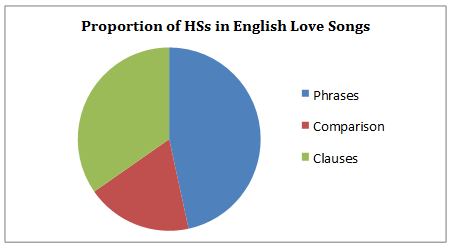
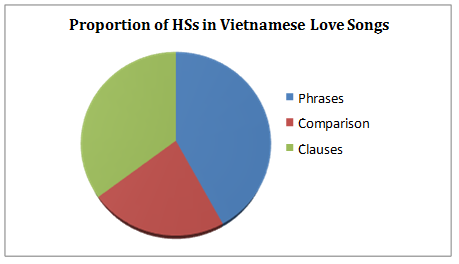
Figure 4.1. Proportion of HSs in English and Vietnamese Love Songs in Terms of Syntactic Features
4.4.2. Frequency of Different Types of Numerical Hyperbole in English and Vietnamese Love Songs
Table 4.3. Proportion of Subtypes of Numerical Hyperbole
| Sub-Types | English | Vietnamese | |||
| Instances | Rate | Instances | Rate | ||
| Numerical Hyperbole | Multiple | 35 | 40.4% | 15 | 19.5% |
| Collective | 18 | 20.6% | 16 | 20.1% | |
| Uniqueness | 17 | 19.6% | 22 | 30.1% | |
| Eternity | 15 | 19.4% | 23 | 30.3% | |
| Total use of Numerical Hyperbole | 85 | 100% | 75 | 100% | |
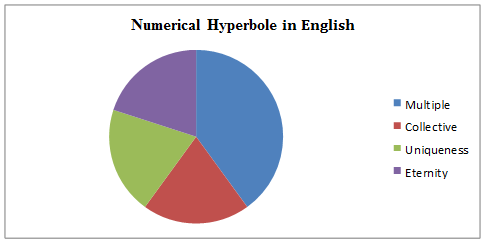
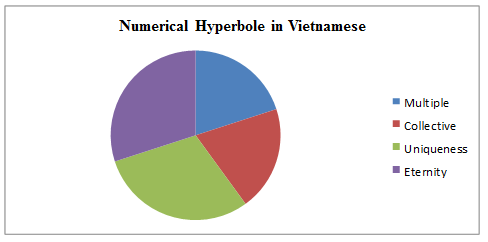
Figure 4.2. Frequency of Different Types of Numerical Hyperbole in English and Vietnamese Love Songs
4.4.3. Frequency of Semantic Features of HSs in English and Vietnamese Love Songs
Table 4.4. Frequency of Semantic Features of HSs in English and Vietnamese Love Songs
| Order | Theme | English | Vietnamese | ||
| Instances | Rate | Instances | Rate | ||
| 1 | Happiness/ Optimism | 16 | 10.7% | 14 | 9.3% |
| 2 | Beauty/ Attraction | 13 | 8.7% | 15 | 10% |
| 3 | Commitment/ Vow | 4 | 2.7% | 7 | 4.7% |
| 4 | Passion | 34 | 22.7% | 37 | 24.7% |
| 5 | Pain/ Sadness | 23 | 15.3% | 26 | 17.3% |
| 6 | Despair | 12 | 8% | 13 | 8.7% |
| 7 | Sacrifice | 9 | 6% | 6 | 4% |
| 8 | Strong Impression | 8 | 5.3% | 6 | 4% |
| 9 | Trust/ Security | 7 | 4.7% | 0 | 0 |
| 10 | Connection/ Intimacy | 6 | 4% | 0 | 0 |
| 11 | Missing | 15 | 10% | 24 | 16% |
| 12 | Jealousy | 3 | 2% | 2 | 1.3% |
| TOTAL | 150 | 100% | 150 | 100% | |
CHAPTER 5
The rationale as well as the aim of the study is explicitly presented in Chapter One. Also, the research questions, and scope of the study can be found here as an overall introduction.
To lay the first stone on the road to the linguistic features of hyperbole, a discussion of some prior researches in the field and theoretical preliminaries concerning stylistics, stylistic devices, the notion of hyperbole, semantic and syntactic features are provided in Chapter Two which is the theoretical background of the thesis. We first review the basic knowledge of stylistics, including its definition, subject matter and the classification of expressive means and stylistic devices in detail. Afterwards, the notion, functions and classification of hyperbolic structures are covered. Important notes on semantic and syntactic features are also mentioned as the foundation for the paper.
Chapter Three is designed to describe the methods and procedure of the study. The quantitative and qualitative approach are applied in the research. Simultaneously, the data collection and analysis process are decribed in this section.
Chapter Four presents the findings of the research where the syntactic and semantic features of HSs in English and Vietnamese love songs are in focus.
Syntactically, HSs are recognized at phrasal level, comparison structures and clausal level. At phrasal level, HSs are recognized in NPs, VPs, AdjPs, AdvPs and PPs. It can be seen that single nouns and single words are employed as hyperbole via the stylistic device of metaphor and simile. In the two languages, noun phrases and verb phrases which have pre-modifiers and post-modifiers using determiners as quantity words are those of hyperbolic meaning. In English, adjective pre-modifies noun, while in Vietnamese, the opposite order occurs. Of note is that the hyperbolic VPs at this level in English are more varied than in Vietnamese. At clausal level, HSs in the two languages share three commonly used structures SV, SVO and SVOO. In Vietnamese, the distinctive construction of a subject and an adjective/ preposition is among hyperbolic clause types different from those in English. With respect to conditionals, in Vietnamese syntax, since conditionals are not really as popular as in English and not regarded as an important grammar feature, there are significant differences between the two languages. In comparison structures, interestingly, the two languages share two commonly used structures, except for the special structure NP + adj + NP in Vietnamese love songs.
Semantically, HSs are taken into consideration in various situations. Accordingly, a variety of meanings can be conveyed or emphasized by HSs. The semantic characteristics of HSs may vary from numerical hyperbole, HSs expressing happiness/ optimism, beauty/ attraction, commitment/ vow, passion, pain/ sadness, despair, sacrifice, strong impression, trust/ security and connection/ intimacy.
Last but not least, in the final chapter, the research has attempted to provide some suggestions for the language teaching and learning as well as the translation of HSs with the hope that they can help learners achieve the best translational equivalents possible and improve their writing skills.
5.2. IMPLICATIONS AND CONTRIBUTIONS OF THE STUDY TO LANGUAGE TEACHING AND LEARNING
5.2.1. For Language Teachers and Language Learners
5.2.1.1. For Language Teachers
With an aim to helping learners of English to communicate and improve their writing skills effectively, teachers should pay attention to emphatic topics of everyday life and provide them with a considerable number of HSs. Teachers should also help learners master the way of using HSs by introducing appropriate structures used in specific context and creating opportunities for them to practice using such HSs in a proper way. Thanks to such applications, learners will gradually familiarize themselves with the deliberately overstated way in communication, thus able to use HSs for a number of purposes mentioned above, improving their speaking and writing skill at the same time. Moreover, different kinds of exercises of hyperbole should be provided to the students depending on the levels of proficiency. In addition, not all of the HSs can be directly translated into Vietnamese and vice-versa. Therefore, the equivalents should be attentively and appropriately selected.
Within the scope of this paper, we have investigated into the syntactic and semantic features of hyperbole, one of the commonly used stylistic devices. The findings of the study may be in one way or another beneficial for the language learners since they provide a background of how to use HSs appropriately. For the language teaching, this study may be another sign implicating the need of encouraging students to exploit HSs with the aim to enhance the effectiveness of their writing.
5.2.1.2. For Language Learners
Apparently, hyperbole plays an important role in conveying the writer’s implied meaning and exerting an emotional effect on audience.To obtain the message, they need to have a wide common background knowledge of culture, customs and society of the target communities beside the knowledge of the language. Also, students should master features of hyperbole in the two languages, which can help them understand and use HSs more efficiently.
5.2.2. For Translators and Interpreters
Translators and interpreters should pay attention to the differences in language and culture, avoid word-for-word translation and select the most appropriate approach to make the translational versions more comprehensible and smoother.
There is no doubt that this research reveals certain shortcomings or limitations due to the time constraints as well as the limitation of materials for analysis. Firstly, although hyperbole is among the most commonly used stylistic devices; it is quite challenging to collect the samples as expected. Then, the different grammar concepts of the two languages caused certain difficulties in classifying data. Moreover, limited personal ability can also be counted as another constraint facing the researcher. This study is merely limited to lyrics without discussing the inter-relationship between lyrics and music, which are both indispensable in a song. For those limitations, I would be very grateful to receive any comments from teachers, friends and those who are concerned, hoping to make the research a better one.
5.4. SUGGESTIONS FOR FURTHER RESEARCH
This thesis has made an investigation into the linguistic features of HSs which includes the syntactic and semantic dimensions. However, there are other aspects that have not been dealt with within the scope of this framework and thus, call for further investigation:
- Pragmatic features and collocations of hyperbole in everday speech;
- Linguistic features of hyperbole in proverbs;
- The inter-relationship between hyperbole in lyrics and music of songs.
E:\DỮ LIỆU COP CỦA CHỊ YẾN\DAI HOC DA NANG\NGON NGU HOC\HOAI UYEN\CD – Luan van Thac si

